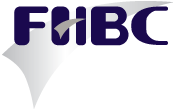 When preparing a set of Financial Statements for a trust, we always aim to minimize paying taxes in the trust, primarily due to the high tax rate a trust attracts/benefit of lower tax rates of beneficiaries, whom in most cases are individuals and companies. This article aims to provide some sort of clarity on the treatment of income earned by a trust and how that income flows and is treated in the hands of the beneficiaries.
When preparing a set of Financial Statements for a trust, we always aim to minimize paying taxes in the trust, primarily due to the high tax rate a trust attracts/benefit of lower tax rates of beneficiaries, whom in most cases are individuals and companies. This article aims to provide some sort of clarity on the treatment of income earned by a trust and how that income flows and is treated in the hands of the beneficiaries.
In Armstrong v CIR3 it was held that income that is the subject of a trust retains its identity until it reaches the parties in whose hands it is taxable, for example, the beneficiaries. A trust is merely a vehicle that is used to transport different types of revenue streams to its “final destination”, i.e., the beneficiaries. That in turn means that any deductions and/or allowances available to these beneficiaries apply. For example, if the trust distributed interest income to an individual, the individual has the benefit of claiming as an allowance the interest exemption of R23,800 (taxpayers under 65) and/or R34,500 (taxpayers 65 years and older).
The Conduit Pipe principle is this; “income retains its identity when flowing from a trust to the beneficiaries” and the method of how this income is paid is irrelevant, whether by means of an annuity and/or any other means, if there is some sort of accrual of income to the beneficiary. One should, however, bear in mind that if a trustee decides to withhold any distribution of income and retain this income in the trust, this will then form part of equity and the “nature of identity” of the income stream would only then become doubtful as seen in the case of SIR vs Rosen.
We can thus accept, in conclusion, for passive income as well as for profits made by a trust (income or capital in nature) it should be accepted that the character of a particular income stream is retained in the hands of the beneficiary.
If you have any enquiries, please contact Bradley Jacobs at bradley@fhbc.co.za

